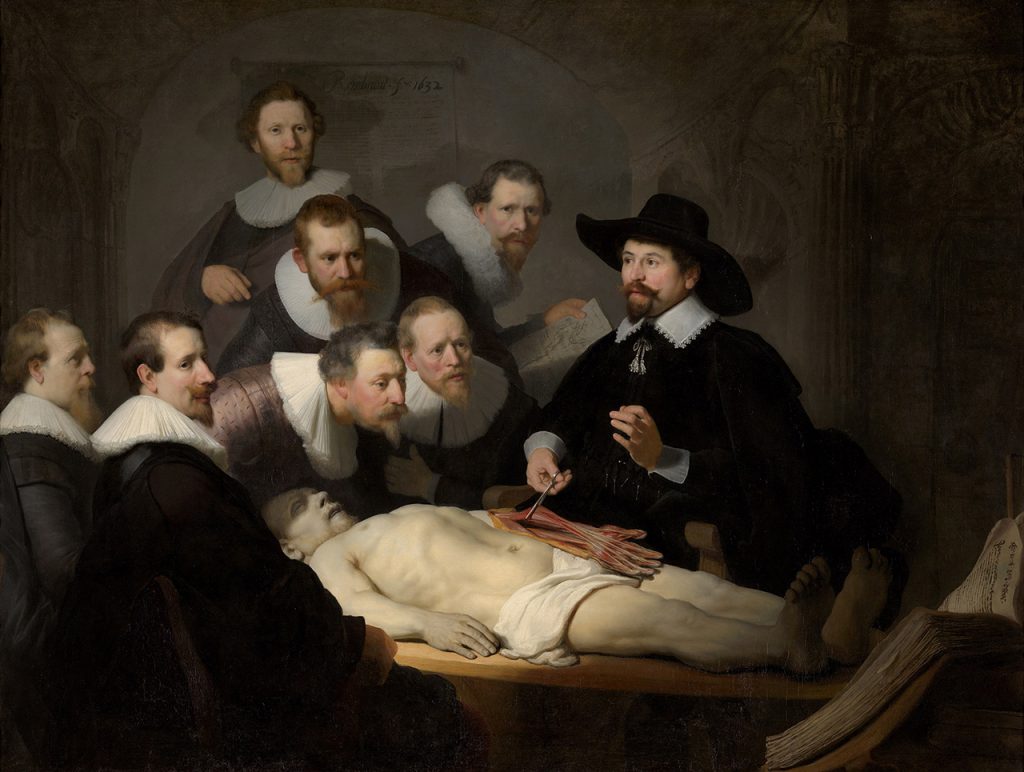Background

In our work, using human-centered design methods, we have created a simulation that uses virtual reality to allow a visitor to actively survey a hypothetical reconstruction of the space and the lesson depicted in Rembrandt’s painting. The virtual anatomy theater was created using 18th century visual sources in combination with photogrammetry documentation done on site at Waag Society in Amsterdam.
In addition to being part of the art canon of Western art, the 169.5 x 216.5 cm oil painting is an intriguing artifact that has been the subject of diverse replicas enabling a variety of interpretive readings and re-readings. Beginning with the recent 2010 appropriation by Zimbabwean artist Yiull Damaso in which Nelson Mandela’s body substitutes the original corpse of Aris Kindt, a criminal whose remains were the subject of the January 16, 1632 autopsy; to its use as a rhetorical aid representing an eternal present in W.G. Sebald’s The Rings of Saturn; and going back to include Edouard Manet’s 1856 copy, the painting provides a singular opportunity to create a unique, dialogical, mixed reality experience.
In our view the painting can also be regarded as commentary about the relationship between scientific knowledge and spectacle. Our interactive media art installation seeks to continue the dialogue and hopefully contribute to the discourses generated by this object of heritage.
New knowledge and practices, new art and design objects
During the past two decades our ubiquitous use of computers has precipitated changes in our cultural developments and dynamics. New fields of practices have emerged. This has been the case in the sciences, the humanities and also in art and design. In its use of the latest trends in virtual reality technology Interactive Diorama is an example of a different class of digitally born art and design object that blends the temporal aspects of cinema with the immersive, spatially situated, and embodied interaction only possible through the use of virtual reality.
The objective in building such installation has been to explore the topic of the design of historical simulations from the point of view of it being a continuum ranging from the most accurate and equivalent simulation to the most artistic and interpretive rendition.
The topic of engagement as an immersed and embodied entity with agency (as in being surrounded by a different reality that one can affect) is one of the key aspects that differentiate virtual reality from the traditional cinema experience.The combined use of immersion with simulation can effectively extend the impact of the narrative in traditional genres such as documentary and fiction drama. In our reconstruction we have used a fully immersive paradigm where the body is placed, and tracked through the use of sensors, in a three-dimensional computer-generated environment.
Currently the space of the Interactive Diorama installation is not shared and there is only one possible interaction channel enabled. We would like to extend the interaction to include other embodied users in the virtual space and in the future perhaps enable Internet access. At the moment our objectives are primarily to research, analyze and better understand the nature of the virtual space itself as well as how to design the human interaction and experience within.